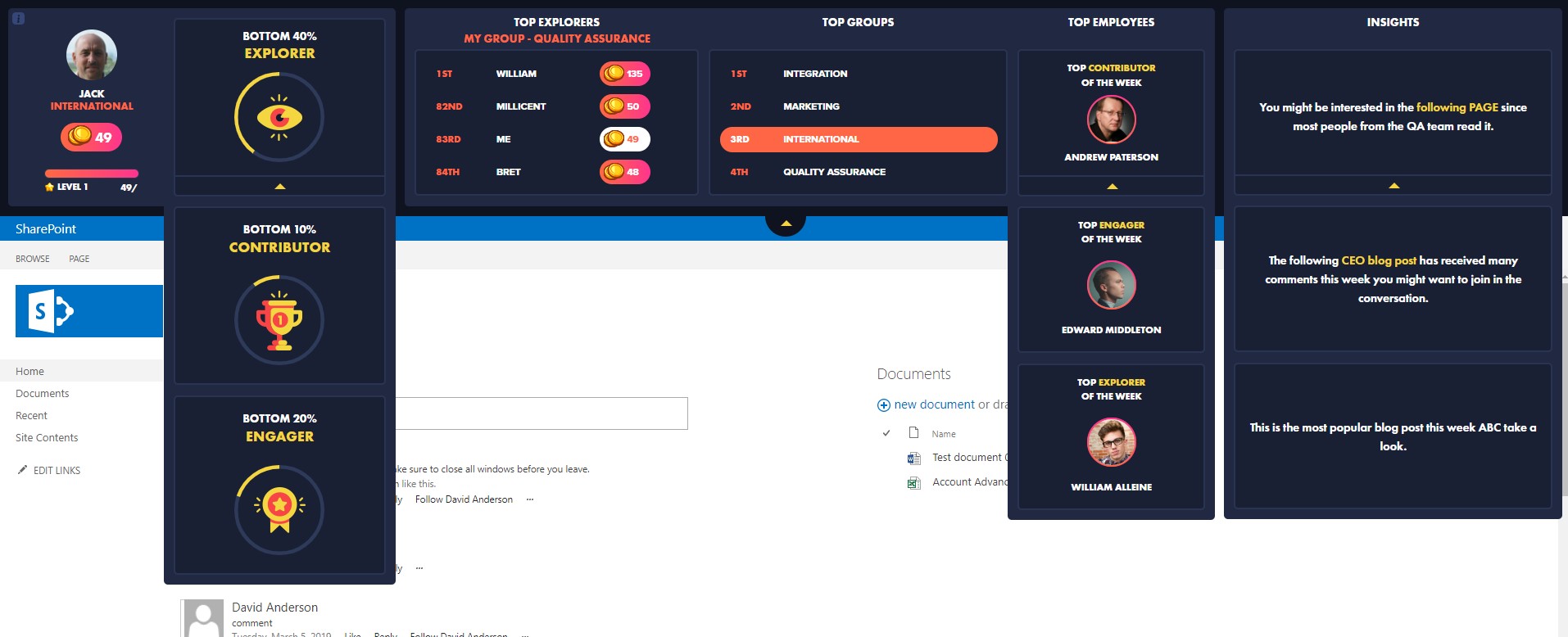Do your employees have a voice within your organization? According to the Society for Industrial and Organizational Psychology (SIOP), the voice of the employee is one of the most important workplace trends in its annual list for 2020. So, what does it mean to capture the employees’ voice, and how does that translate into engagement and productivity for your organization?
What is the Voice of the Employee?
Simply put, the voice of the employee is the process of giving your employees the freedom to express their ideas and concerns without fear of being judged or face any consequences for speaking out. By having a ‘voice,’ employees are given the chance to influence corporate decisions that directly affect them and the entire organization.
More companies are realizing now more than ever before the value of the employee voice. The reason behind this is supported by this research. According to this source, up to 90% of employees are more likely to stay in an organization if they are given the opportunity to be heard and if the organization acts on the feedback that they have given.
The success of a voice of the employee strategy, therefore, lies not just in giving employees the platform to speak, the most important aspect of giving your employees a voice is the follow-up. You need to take appropriate and meaningful actions in response to the feedback given. Otherwise, it’s of no use and your employees will still lack engagement.
The Voice of the Employee Process
If you want to build a powerful and effective voice of employee program, it is important to have a definitive process. It should outline what you need to do to obtain the information you need from your employees and the appropriate actions to take.
Step 1: Collect data from employees.
There are several processes and methods you can use to collect data from employees. The Voice of the Employee survey is just one of many examples. You can also conduct in-person interviews, especially if the employees are comfortable speaking directly with HR or their superiors. Surveys, however, are the preferred method of collecting data since anonymity gives employees the freedom to truly speak their minds, so to speak.
When collecting data, it is important to incorporate a mix of quantitative and qualitative data. For example, instead of surveys that give the employees a chance to provide a rating, make sure to ask open-ended questions. The latter will allow them to write in their own words and express their sentiments more truthfully.

Step 2: Data Analysis
Once you have collected the data you need from the first step, it’s time to examine what that data represents. You can easily crunch numbers to obtain statistics and percentages from your employees. However, you need to give your full focus on the insightful answers and the qualitative feedback.
The feedback from your employees can be analyzed to obtain actionable insights. This will help you develop a plan of action to improve the employee experience within your organization.
Step 3: Execute
This is the most crucial step of the Voice of Employee program: the implementation. Based on the analysis of the data collected, you can put new strategies into practice to improve employee experience and engagement.
If you have decided to act on the feedback given by your employees, take time to let them know about the changes you plan to implement. Also, let them know that you always welcome feedback. This is a never-ending process; you need to continually seek feedback to adapt to the changing needs of your employees.

How to Develop a Voice of the Employee Strategy
In this infographic, 63% of employers believe that retaining employees is more challenging than hiring them. The same report cites that 1 in 3 employees leave a company after only a year.
If you don’t want this to happen to your organization, you need a sound voice in the employee strategy. Here are some tips to incorporate in your organization:
Put Priority on Active Listening
Active listening is the heart and soul of a powerful voice of employee strategy. Make sure it is embedded into your company culture. This starts with leaders in an organization and is closely tied to organizational success.
With active listening, you don’t just listen. You completely absorb what is being said beyond the words and then respond to it in an appropriate and timely manner. Regardless of the size of your organization, you need to invest in a listening-oriented management approach. This gives everyone a voice and the confidence that whatever is being said has an eventual outcome.
Open Up Various Communication Channels
A survey on employee communication revealed that 58% of employees who are kept out of the loop in company communication feel less valued in terms of their standing in that organization. According to neuroscience experts, the brain considers ambiguity as a threat to its existence.
Organizational leaders need to provide open and transparent communication channels for all employees – from top to bottom. This not only gives your employees a voice, but the transparency will empower them. This makes them feel like a valued member of the organization that have a say in the decision-making.
Giving out surveys is good, but make sure you provide more avenues for their voices to be heard. This includes town hall meetings, suggestion boxes, team feedback sessions, and more.

Translate Feedback into Action
This is an emphasis on a point made above – collecting data and analyzing them is of no use if they are not turned into actionable steps. Put your analysis into practice for employees to overcome any hardships they face at work and for them to become more productive.
When employees see the changes that they propose being implemented, it reassures them that their voice is heard and acted on. When employees are happy, it will make them more motivated. And motivated employees are good for your bottom line.
Conclusion
A customer-centric approach is beneficial for businesses. However, times are changing and the voice of the employee should not be lost in the process. Business experts agree that giving power to the employee voice is going to translate to better service and products for your customers. It is a win-win situation for any organization to implement a good voice of employee program.
FAQs about the Voice of the Employee
What is the employee voice model?
The employee voice model refers to the choice employees make between speaking up or staying silent when they have ideas, feedback, or valuable insights. This concept is crucial in organizations where workers are encouraged to share their thoughts, contributing to decision-making and continuous improvement.
What is an example of employee voice in the workplace?
An example of employee voice in action is when employees use formal channels such as team meetings, performance reviews, or even emails to express their opinions or propose ideas for improving processes. This can range from offering suggestions for operational improvements to addressing concerns about workplace policies.
What are the elements of employee voice?
The key elements of employee voice encompass a variety of ways employees can share their views, including formal mechanisms like surveys, feedback sessions, or one-on-one discussions, as well as informal settings such as casual conversations with supervisors. Each of these channels provides an opportunity for employees to speak openly and contribute to the workplace environment.
What is the effectiveness of employee voice?
Employee voice has a profound impact on engagement and well-being. Employees who feel heard are typically more engaged, motivated, and committed to their work. Additionally, they tend to experience higher job satisfaction and overall well-being, fostering a more positive and productive work environment. When organizations actively listen and act on employee feedback, they often see improvements in retention and overall performance.
What are the negatives of employee voice?
While encouraging employees to express their opinions can lead to positive outcomes, there can be downsides if not managed properly. Sometimes, employees may misuse the opportunity to voice their concerns, turning it into a forum for personal complaints or venting frustrations, rather than offering constructive feedback that benefits the organization. It’s important to create guidelines to ensure the employee voice is used productively
Related Topics:
- Revolutionize Your HR & Corporate Communication with Engage
- Microsoft 365 Office 365 Monitoring: How To Track a Remote Workforce
- The Microsoft Modern Workplace: Driving Productivity Through Strategic Application Use














 Follow @cardiolog
Follow @cardiolog 